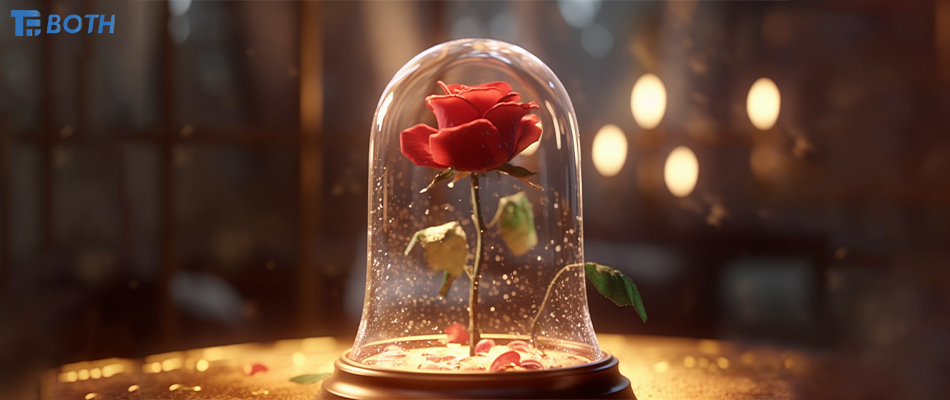Preserved flowers, also known as fresh-keeping flowers or eco-flowers, are sometimes called "everlasting flowers." They are made from fresh-cut flowers such as roses, carnations, orchids, and hydrangeas, processed through freeze-drying to become dried flowers. Preserved flowers maintain the color, shape, and texture of fresh flowers, with rich colors and versatile uses. They can last for at least three years and are ideal for floral design, home decor, and special events as a high-value floral product.

Ⅰ. Preserved Flower Production Process
1. Pretreatment:
Start by selecting healthy fresh flowers, such as roses with approximately 80% bloom rate. The flowers should be well-shaped, with thick, vibrant petals, strong stems, and vivid colors. Before freezing, perform a color-protection treatment by soaking the flowers in a 10% tartaric acid solution for 10 minutes. Remove and gently pat dry, then prepare for pre-freezing.
2. Pre-Freezing:
In the initial experimentation phase, we followed the freeze dryer guidelines, requiring the material to be thoroughly frozen to ensure effective freeze-drying. Generally, the pre-freezing takes about four hours. Initially, we ran the compressor for four hours, finding the material reached below -40°C, well under the eutectic temperature of roses.
In subsequent trials, we adjusted the temperature to just below the eutectic temperature of roses by 5-10°C, then held it there for 1-2 hours to solidify the material before starting the drying process. Pre-freezing should maintain a final temperature 5-10°C below the eutectic temperature. To determine the eutectic temperature, methods include resistance detection, differential scanning calorimetry, and low-temperature microscopy. We used resistance detection.
In resistance detection, when the flower temperature drops to the freezing point, ice crystals begin to form. As the temperature further decreases, more ice crystals form. When all moisture in the flower freezes, resistance suddenly increases to near infinity. This temperature marks the eutectic point for roses.
In the experiment, two copper electrodes were inserted into the rose petals at the same depth and placed in the freeze dryer’s cold trap. The resistance began increasing slowly, then rapidly between -9°C and -14°C, reaching near infinity. Thus, the eutectic temperature for roses is between -9°C and -14°C.
3. Drying:
Sublimation drying is the longest stage of the vacuum freeze-drying process. It involves simultaneous heat and mass transfer. In this process, our freeze dryer uses a multi-layer heating shelf system, with heat transferred primarily by conduction.
After the roses are thoroughly frozen, turn on the vacuum pump to reach the preset vacuum level in the drying chamber. Then, activate the heating function to start drying the material. Once drying is complete, open the exhaust valve, turn off the vacuum pump and compressor, remove the dried product, and seal it for preservation.
Ⅱ. Methods of Making Preserved Flowers
1. Chemical Solution Soaking Method:
This involves using liquid agents to replace and retain moisture in the flowers. However, in high temperatures, it may cause leakage, mold, or fading.
2. Natural Air-Drying Method:
This removes moisture by air circulation, an original and simple method. It is time-consuming, suitable for plants with high fiber, low water content, small blooms, and short stems.
3. Vacuum Freeze-Drying Method:
This method uses a freeze dryer to freeze and then sublimate the flower’s moisture in a vacuum environment. Flowers treated with this method retain their shape and color, are easy to preserve, and can rehydrate while maintaining their original biochemical properties.
Ⅲ. Features of Preserved Flowers
1. Made from Real Flowers, Safe and Non-Toxic:
Preserved flowers are created from natural flowers using high-tech processes, combining the longevity of artificial flowers with the vibrant, safe qualities of real flowers. Unlike dried flowers, preserved flowers retain the plant's natural tissue, water content, and color.
2. Rich Colors, Unique Varieties:
Preserved flowers offer a wide array of colors, including shades not found in nature. Popular varieties include Blue Roses, as well as newly developed varieties such as roses, hydrangeas, calla lilies, carnations, orchids, lilies, and baby's breath.
3. Long-Lasting Freshness:
Preserved flowers can last for years, remaining fresh-looking through all seasons. Preservation duration varies by technique, with Chinese technology allowing preservation for 3-5 years, and advanced global technology enabling up to 10 years.
4. No Watering or Care Required:
Preserved flowers are easy to maintain, requiring no watering or special care.
5. Allergen-Free, No Pollen:
These flowers are pollen-free, making them suitable for people with pollen allergies.
If you are interested in our Freeze Dryer or have any questions, please feel free to contact us. As a professional manufacturer of freeze dryers, we offer a wide range of specifications including home, laboratory, pilot and production models. Whether you need household equipment or large industrial equipment, we can provide you with the best quality products and services.
Post time: Nov-20-2024






